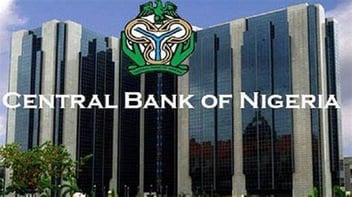
CBN Changes Cash Reserve Ratio from 32.5% to 45%: How This Affects Your Loans
The Cash Reserve Ratio (CRR) is a critical tool used by the Central Bank of Nigeria (CBN) to regulate the amount of funds that commercial banks must hold in reserve rather than lend out. By adjusting the CRR, the CBN can influence the amount of money circulating within the economy, thus impacting inflation, interest rates, and overall economic stability.
Recently, the CBN announced a significant increase in the CRR from 32.5% to 45%. This move has generated considerable discussion, especially among borrowers and financial institutions, as it signals a tightening of monetary policy. The primary objective behind this decision is to curb inflation and stabilize the naira, but it also brings about several consequences for the lending market.
In this blog post, we'll explore how this increase in CRR will likely lead to higher interest rates, reduced loan availability, and broader economic implications. Whether you're a potential borrower or a business owner, understanding these changes can help you navigate the financial landscape more effectively.
Understanding the CRR and Its Impact
What is the Cash Reserve Ratio (CRR)?
The CRR is a monetary policy tool used by central banks to control liquidity in the banking system. It dictates the percentage of a bank's total deposits that must be kept in reserve with the central bank and cannot be used for lending or other investments. By adjusting the CRR, the central bank can either encourage or restrict the amount of money banks can lend to the public.
How Does CRR Affect Banks' Lending Capacity?
When the CRR is high, banks have less money to lend, which reduces their lending capacity. Conversely, a lower CRR means banks can lend more, stimulating economic activity. The recent increase to 45% means that banks must hold a larger portion of their deposits with the CBN, leaving them with less liquidity for loans. This tightening of liquidity is a deliberate move to control inflation but has the side effect of making loans scarcer and more expensive.
Relationship Between CRR and Interest Rates
As banks have less money to lend, they may raise interest rates to balance their reduced lending capacity. This is because the demand for loans may remain the same or even increase, but with fewer funds available, banks can charge higher rates. Additionally, the increased CRR raises the cost of funds for banks, which they may pass on to borrowers through higher interest rates.
Implications of the CRR Increase on Loans
Potential Rise in Interest Rates on Loans
With the CRR at 45%, banks are likely to increase interest rates on various types of loans to manage their reduced liquidity. For borrowers, this means higher costs of borrowing. Whether you're considering a personal loan, mortgage, or business loan, it's essential to be prepared for potentially higher interest rates in the coming months.
Reduced Loan Availability Due to Tightened Liquidity
As banks hold more reserves with the CBN, the amount of money available for lending decreases. This reduction in liquidity means that not only will loans become more expensive, but they may also become harder to obtain. Banks might tighten their lending criteria, making it more difficult for individuals and businesses to qualify for loans.
Impact on Different Loan Types
- Personal Loans: Expect higher interest rates and stricter qualification criteria, which could make it more challenging to secure personal loans.
- Mortgage Loans: The real estate market could see a slowdown as mortgage rates rise, making home ownership less affordable for many.
- Business Loans: Small and medium enterprises (SMEs) might struggle to access the funding they need to grow, potentially leading to slower economic growth.
Case Studies and Historical Precedents
Looking back at previous instances when the CRR was increased, similar patterns emerged. For instance, when the CRR was raised in 2014 from 12% to 15%, banks responded by tightening credit, which led to a slowdown in economic activity. This historical context highlights the potential challenges that borrowers and businesses might face following this latest increase.
Economic Consequences of the CRR Hike
Impact on Economic Growth and Development
An increase in the CRR typically slows down economic growth. By making loans more expensive and less accessible, businesses may delay expansion plans, reduce investment, or cut back on hiring. This can lead to slower economic growth, which may have long-term implications for development, especially in emerging markets like Nigeria.
Effects on Businesses and Industries
Industries that rely heavily on credit, such as manufacturing, real estate, and retail, are likely to be the hardest hit. These sectors may see reduced demand as consumers and businesses cut back on spending. Additionally, businesses that are already operating on thin margins may struggle to survive in an environment of higher borrowing costs.
Potential Implications for Borrowers and Consumers
For consumers, the increased cost of loans could lead to a reduction in discretionary spending, as more of their income goes toward servicing debt. This could have a knock-on effect on the broader economy, leading to lower consumer demand and slower growth. Borrowers with variable-rate loans may also see their monthly payments increase, putting additional pressure on household budgets.
Coping with the Changes
Strategies for Borrowers to Manage Higher Interest Rates
Borrowers can take several steps to mitigate the impact of higher interest rates:
- Refinance Existing Loans: If you have existing loans, consider refinancing them now before rates rise further.
- Fixed-Rate Loans: Opt for fixed-rate loans to lock in your interest rate and avoid future increases.
- Debt Consolidation: Consolidate high-interest debts into a single loan with a lower rate to manage your payments better.
Tips for Securing Loans in a Tighter Credit Market
In a tighter credit market, getting approved for a loan can be more challenging. Here are some tips to improve your chances:
- Improve Your Credit Score: A higher credit score makes you a more attractive borrower to lenders.
- Increase Your Down Payment: If you're applying for a mortgage, a larger down payment can make you a more attractive candidate.
- Show Stable Income: Lenders want to see that you have a stable income that can support loan repayments.
Importance of Financial Planning and Budgeting
With the likelihood of higher interest rates and reduced loan availability, it's more important than ever to focus on financial planning and budgeting. Ensure that you have a clear understanding of your income and expenses, and be prepared to adjust your budget to accommodate higher loan repayments if necessary.
Conclusion
The increase in the Cash Reserve Ratio by the CBN from 32.5% to 45% is a significant move that will have widespread implications for borrowers, businesses, and the economy at large. As interest rates rise and loans become harder to secure, it's crucial for borrowers to stay informed and adapt to the changing financial landscape.
By understanding the potential impacts and taking proactive steps, you can navigate these changes more effectively. Whether you're looking to secure a loan or simply manage your existing debt, now is the time to review your financial strategy and make the necessary adjustments. In the long term, staying informed and being prepared can help you weather the challenges that come with a tighter credit market.




